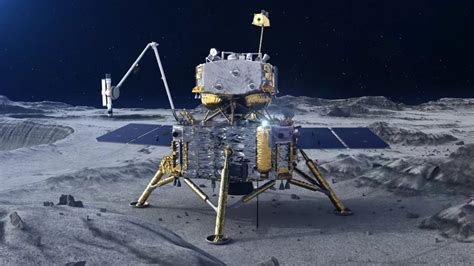The Chang’e 6 lunar mission has made history by successfully returning with samples from the unexplored far side of the moon. This mission, spearheaded by China, symbolizes a leap forward in lunar exploration, providing valuable insights and laying the groundwork for future space missions. The retrieved samples not only enrich our understanding of the moon’s geology but also bring up pertinent questions about the sustainability of future lunar bases, particularly in terms of energy solutions.
One of the most intriguing subtexts of the Chang’e 6 mission is the ongoing debate on how to power lunar bases sustainably. While the moon is rich in *helium-3*, a potential fuel for nuclear fusion, it lacks other crucial resources like abundant water for cooling traditional nuclear reactors. This scarcity raises substantial challenges for implementing fission power plants on the lunar surface. In the Earth’s atmosphere, nuclear power plants use vast amounts of water for cooling and maintaining safe operational temperatures. In the vacuum of space, managing the waste heat from these reactors without abundant water presents a significant engineering hurdle.
A community discussion delved into possible solutions, from using the Moon’s regolith as a thermal heat sink to deploying large radiators. One user aptly noted, ‘*On the Moon, you could also use the Moon itself as a heat sink. But yeah, any near-term solutions would use giant radiators*.’ This insight reflects a confluence of creative engineering and practical constraints, showing that while conventional methods might be adapted, unique innovations are still vital. Utilizing giant radiators to dissipate heat is a feasible but not fully comprehensive answer, given the extreme temperature variations on the lunar surface.
Moreover, hefty debates weigh the viability of solar power versus nuclear fission in sustaining lunar colonies. On Earth, solar power has become increasingly efficient, but on the Moon, where the night can last up to two weeks, energy storage becomes a daunting task. *’Solar PV linked to battery storage is the obvious energy source for a moonbase,’* one commenter suggested, though this statement spurred critical scrutiny. With the Moon’s harsh environment, even enhanced energy storage systems might not suffice to bridge the extended lunar nights without significant advancements and deployment of copious backup batteries or other means of energy reserves.
The prospect of constructing energy infrastructures like tall solar panels or extensive power lines at the lunar poles to harvest constant sunlight has also been floated. This technique draws inspiration from the solar arrays on Earth but adapted to the Moon’s unique environment. One interesting suggestion involved *using the Shackleton crater* at the lunar south pole, where solar panels could benefit from near-continuous sunlight. These approaches underscore the need for targeted, well-planned strategies to harness and store solar energy for lunar bases effectively.
In comparison, the reliability of nuclear power plants on the Moon lies significantly in their independence from solar cycles and weather conditions. However, nuclear reactors come with their own set of complications, such as radioactive waste management and safe operation in the space environment. Modern advancements, like *NASA’s Kilopower project*, have been pivotal in designing safer, more efficient space reactors capable of providing steady energy for prolonged missions. Utilizing **sodium or Stirling engines for coolant instead of water** has also been a discussed alternative, minimizing the reliance on precious lunar water resources.
Ultimately, the Chang’e 6 mission not only fortifies China’s position in space exploration but also catalyzes a broader discussion about the future of sustainable lunar bases. It compels us to rethink and innovate on how we approach energy and resource management in space. Whether through advanced nuclear technologies or optimized solar power systems, the challenges of powering a lunar base effectively represent a microcosm of the broader quest for sustainable space exploration. As we continue to push the boundaries of human presence beyond Earth, the lessons from these lunar missions will be invaluable in preparing for the next giant leap: establishing a permanent human presence on the Moon and eventually Mars.


Leave a Reply